What is curly honeysuckle and how to grow it?
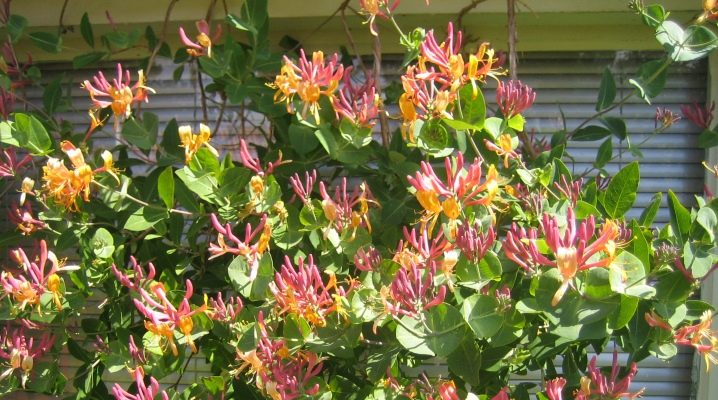
Honeysuckle is a climbing plant that is often used to decorate areas. Very beautiful hedges can be formed from it. But before planting honeysuckle on your site, you need to familiarize yourself with all the features of this ornamental plant.
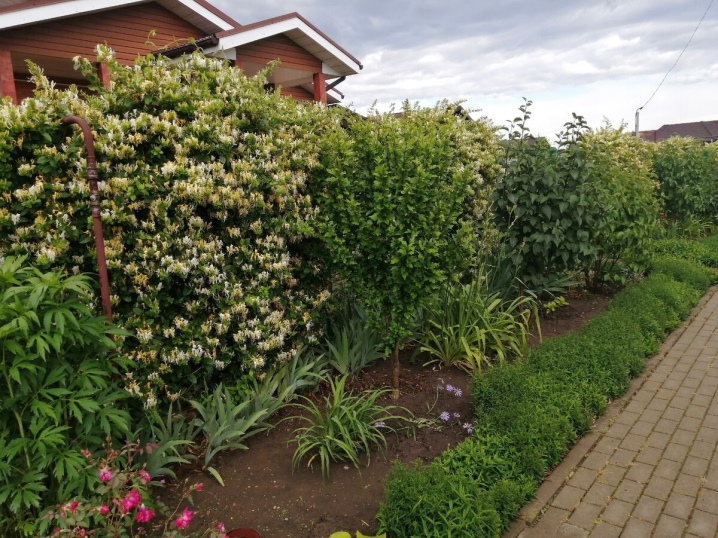
general description
Climbing honeysuckle is a beautiful deciduous shrub... If supported, the plant can grow up to 5-6 meters in height. Its foliage is elongated, dark green. Flowers, which eventually appear on the surface of the bush, reach 5 centimeters in length. They are collected in neat inflorescences and have a pleasant sweetish aroma. By the evening, it becomes more intense.
This plant is found in both warm and cold regions. It is distinguished by excellent drought resistance and unpretentiousness. Honeysuckle can grow even in dark corners of the garden. At the same time, her flowers will still be large and beautiful. On average, honeysuckle blooms from early to late summer. The average lifespan of this climbing plant is 40-50 years.
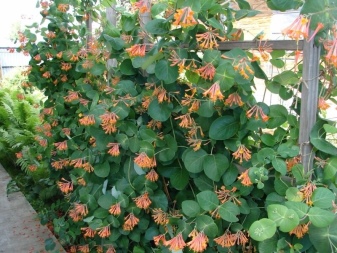
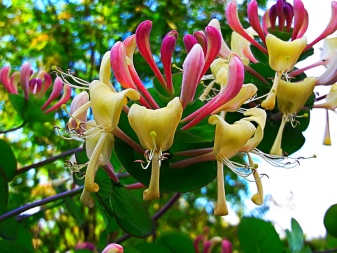
Popular species and varieties
Now there are several varieties of climbing honeysuckle.
- "Caprifol". This honeysuckle is also called aromatic honeysuckle. It begins to bloom in mid-May. The flowers that appear on the shoots can be light pink or yellow. By the middle of summer, they begin to darken.
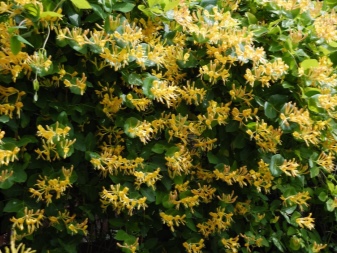
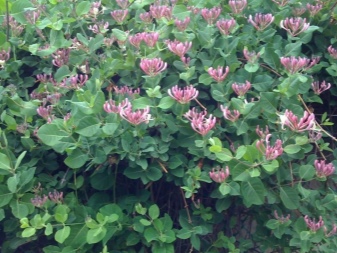
- Brown. This type of honeysuckle is smaller. It grows up to 2-2.5 meters in height. Young shoots are distinguished by a pleasant light purple color. The foliage of such a honeysuckle has a dark green tint. Flowers are red, pink, or orange. They appear on the shoots in large numbers. This usually happens from mid-summer to the second half of autumn.
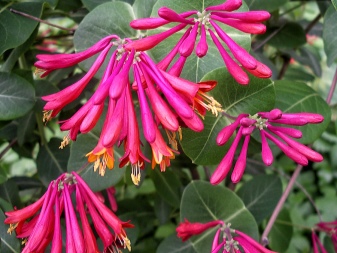

- "Korolkova". This shrub is frost resistant. It can grow up to three meters in height. Its foliage is elongated in length. Her color is bluish green. Such honeysuckle begins to bloom at 3-4 years old. Her flowers can be pink or red.
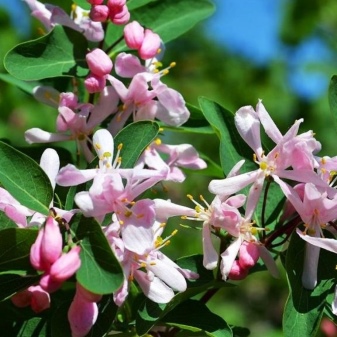
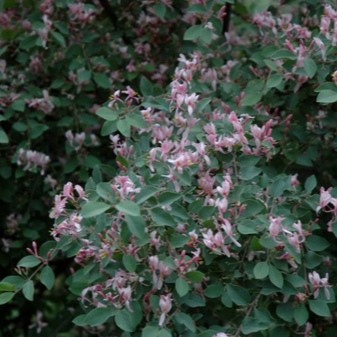
- Gerald. It is a beautiful liana-like honeysuckle that stays green all year round. That is why many gardeners love her very much. The flowers of this honeysuckle are white or light yellow, but darken over time.

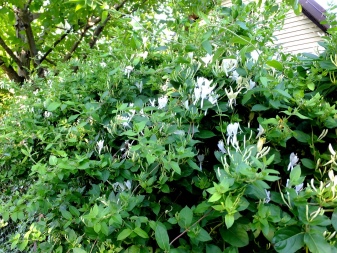
- "Tatarskaya". This type of honeysuckle begins to bloom in the second half of May. Each flower on its branches is beautiful in its own way. After flowering, red or orange berries appear on the shrub. They ripen in early autumn.
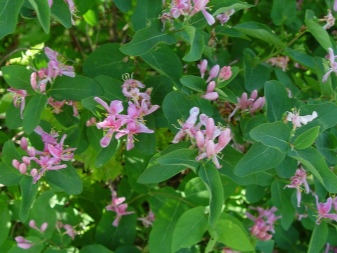
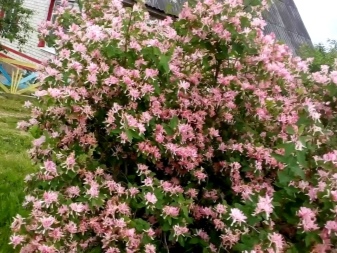
- "Henry". This variety of honeysuckle also retains its attractiveness in winter, because even with the onset of cold weather, most of the foliage does not fall off the bush. The flowers are red in color and have a pleasant aroma. Closer to September, deep black berries appear on the surface of the shrub.
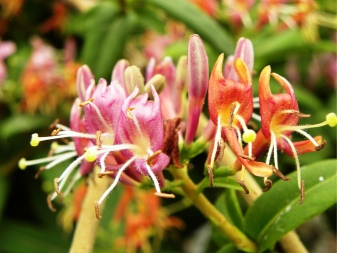
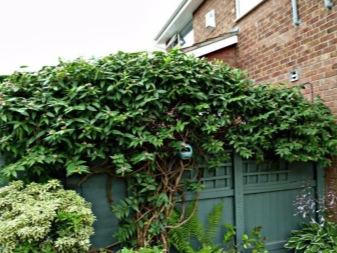
- "Primorskaya"... Vines are decorated with yellow-pink voluminous flowers. They appear on the tree in June and do not fall off until mid-autumn. The foliage of honeysuckle is large. In autumn, it turns golden yellow.
One of the most common varieties of seaside honeysuckle is Chojnów Fragrant Cloud.
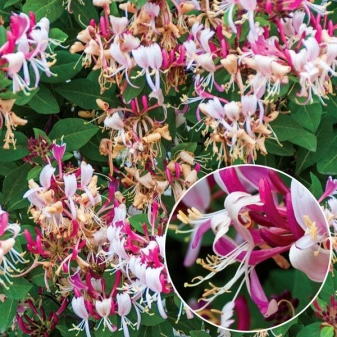
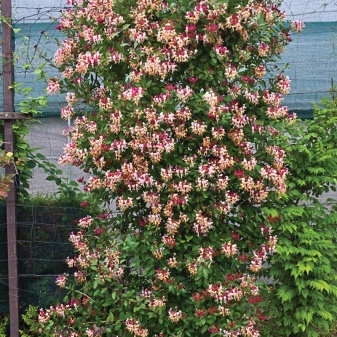
- "Japanese"... This is one of the most demanding varieties of honeysuckle to care for. The plant develops well and blooms only when planted on the sunny side of the site. For the winter, it must be carefully covered. But with proper care, the bushes look very beautiful.
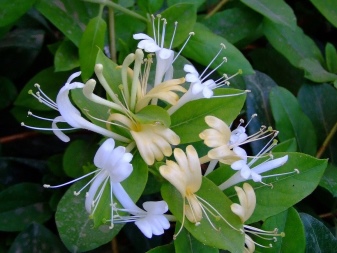
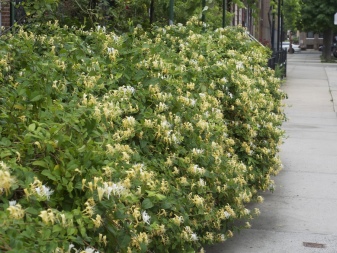
- "Caucasian"... In nature, this type of honeysuckle is found in the Caucasus. The plant reaches a height of 3 meters. It begins to bloom in the second half of May. The flowers have a pleasant purple or pink color.
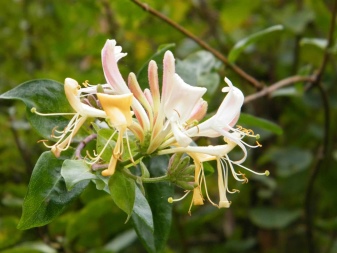

- Belgica Select. This type of climbing honeysuckle is frost-resistant. It blooms twice a year. The flowers have a pleasant purple color. Fruits on the bush appear in the first half of autumn.
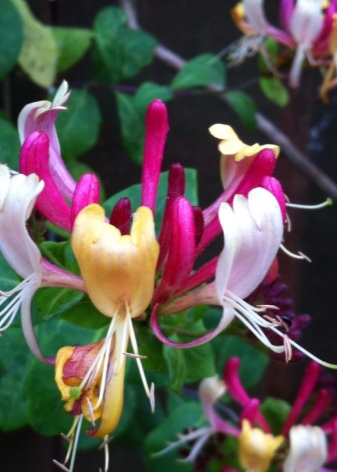
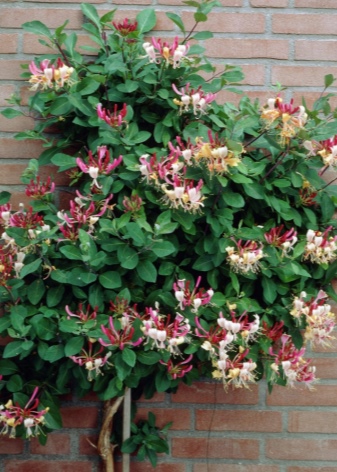
You can plant several types of honeysuckle at once on your site. They will be perfectly combined with each other.
Landing
Planting honeysuckle is best on the sunny side of the plot. This can be done both in spring and autumn. For planting, it is worth choosing seedlings at the age of 2-3 years. Young plants must be healthy and strong. It is worth buying them in nurseries with a good reputation.
Before disembarking, the site must be prepared... To do this, it is necessary to weed out all the weeds, as well as loosen the ground. After that, you can start digging holes. They must be deep enough. This is done so that the rhizome can be placed in them without damaging it. The distance between the holes must be within two meters.

The bottom of the pit must be covered with a drainage layer. For this purpose, you can use gravel, pebbles or crushed bricks. From above, the drainage must be covered with a layer of fertilizer. Typically, gardeners mix a bucket of compost with ash and some superphosphate. Having poured fertilizer into the pit, pour a little water from above.
A seedling can be placed in a hole prepared in this way. It must be carefully sprinkled with nutritious earth. Next, the plant must be watered abundantly again. After that, it is advisable to additionally mulch the honeysuckle with sawdust, peat or dry straw.
For plants to develop normally, they need to be planted next to some kind of support. It can be a gazebo, a fence, or a wall of a building. In addition, curly honeysuckle can be located next to specially installed trellis.
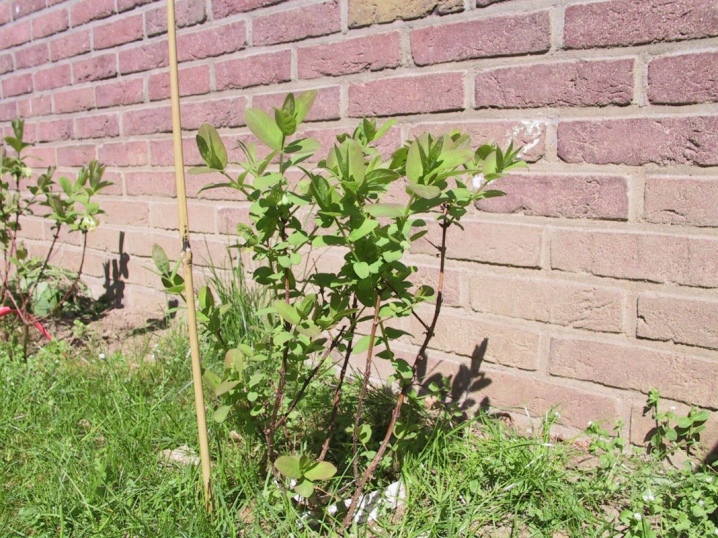
Care
After planting on the site, the plant must be properly cared for.
Watering and loosening the soil
First of all, it is worth remembering that honeysuckle loves well-moisturized soil. Therefore, in hot weather, it must be watered abundantly. After watering, the soil should be loosened thoroughly. In this case, it is important not to touch the roots. To better retain moisture in the soil, honeysuckle can be additionally mulched. For this, gardeners usually use peat or dry sawdust.
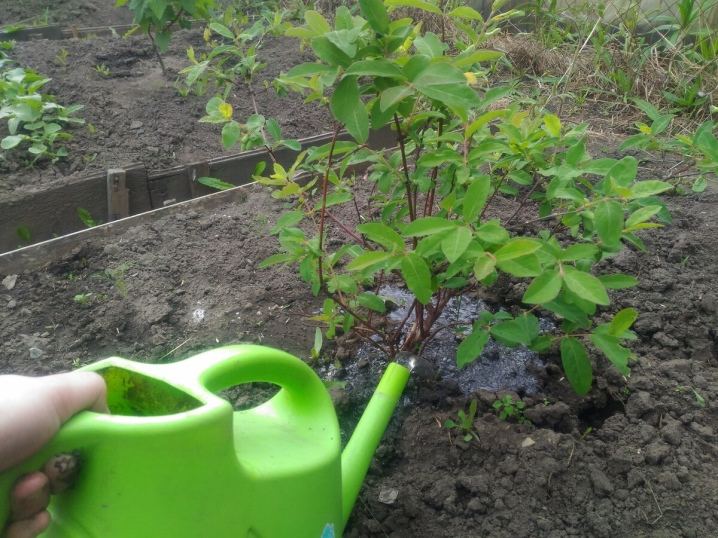
Pruning
To keep the bushes looking well-groomed, they need to be pruned regularly. Vine formation should be started already in the second year after planting. In the spring, remove any frozen, dry, or broken shoots. Healthy branches need to be shortened. This will speed up the process of their growth. Cut off shoots should be fixed on a support.
The second time, the honeysuckle is pruned after the end of its flowering. As a rule, this is done in the second half of the summer. At this time, young twigs that do not grow correctly are removed. It is impossible to touch the supporting shoots, because it is thanks to them that the shape of the plant is kept. The third time, the shrub can be trimmed additionally in the fall. At this time, it is necessary to remove all dry or diseased shoots.
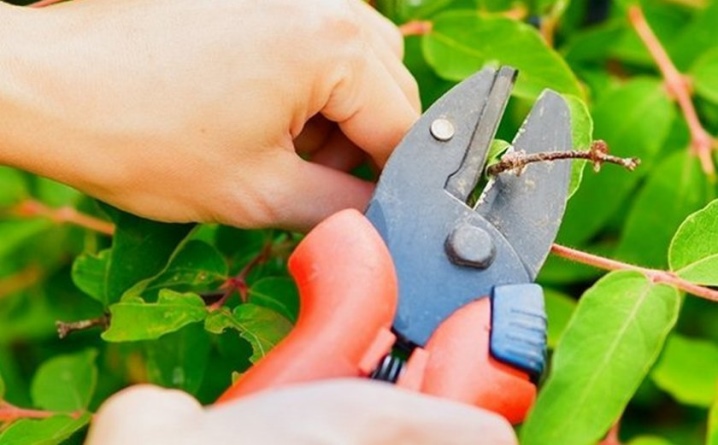
Top dressing
Regular feeding of honeysuckle will help to achieve a beautiful flowering. If all the necessary fertilizers were applied during planting, then you will have to feed the honeysuckle next time only after 2-3 years.
In the future, honeysuckle needs to be fertilized twice a year. In the spring, nitrogen fertilizers are applied to the soil. Most often, mullein solution is used for this. In autumn, plants are fed with humus. Potash and phosphorus fertilizers introduced at this stage will help make them stronger.
As a rule, top dressing is applied at the root. It is best to process the site in the early morning or late evening.
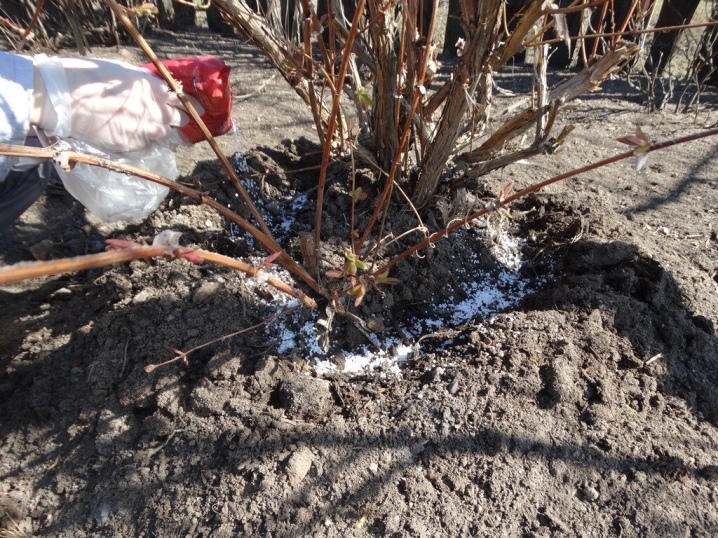
Reproduction
There are several main ways of breeding weaving honeysuckle.
Cuttings
To propagate plants, gardeners usually use cuttings... Lignified shoots are cut from the plant. The length of each of them should be within 20 centimeters. The cuttings are placed in containers with damp earth. It can be additionally mixed with peat. The boxes must be additionally covered with foil. From time to time, cuttings need to be watered. In spring, rooted cuttings can be planted in open ground.
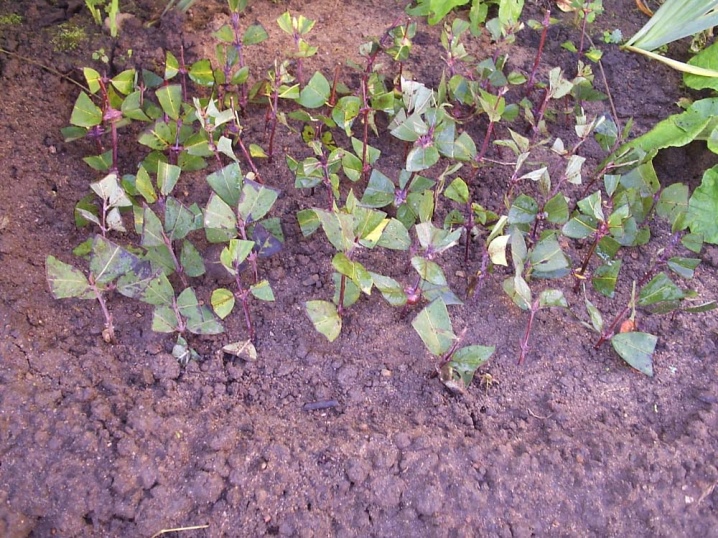
By dividing the bush
Plants 4-5 years old can be propagated by dividing the bush. To do this, it must be dug up and cleaned of the earth. Then the rhizome must be cut with a sharp knife or shovel. Sprinkle the slices with crushed charcoal. Bushes treated in this way can be planted in pits.
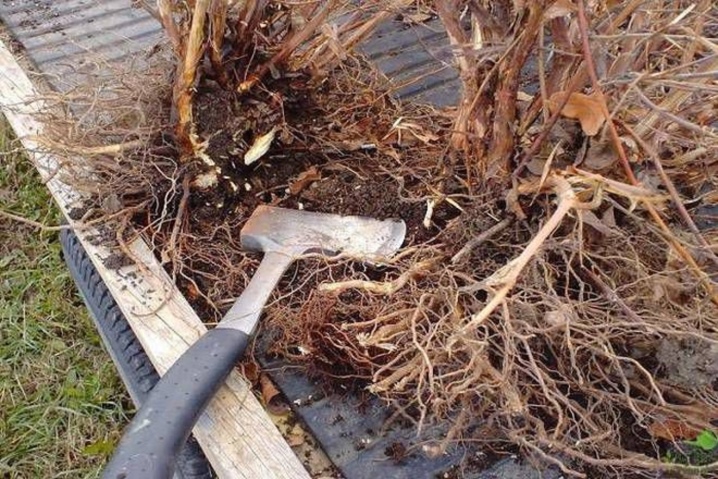
Layers
In early spring, you can try to propagate honeysuckle with horizontal layers. To do this, annual shoots that are in the lower part of the bush must be bent to the previously loosened ground. After that, the shoots must be carefully fixed. Throughout the summer, they need to be regularly hilled and watered. In the spring, the shoots will need to be cut off from the mother plant and transplanted to a new location.
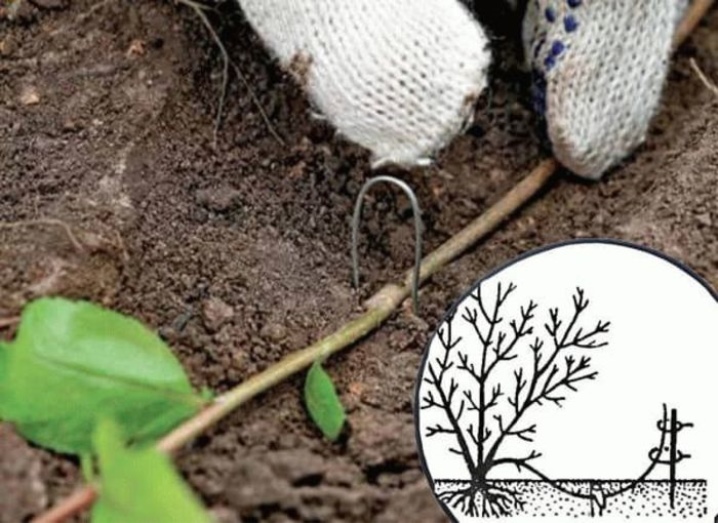
Seeds
This breeding method is the least used. Gardeners need to extract seeds from fruits that ripen in the fall. They need to be placed in a container with a moist substrate. The top of the box must be covered with cling film. When the seeds germinate, they only need to be transplanted into open ground. Such seedlings usually bloom only 5-6 years after planting.
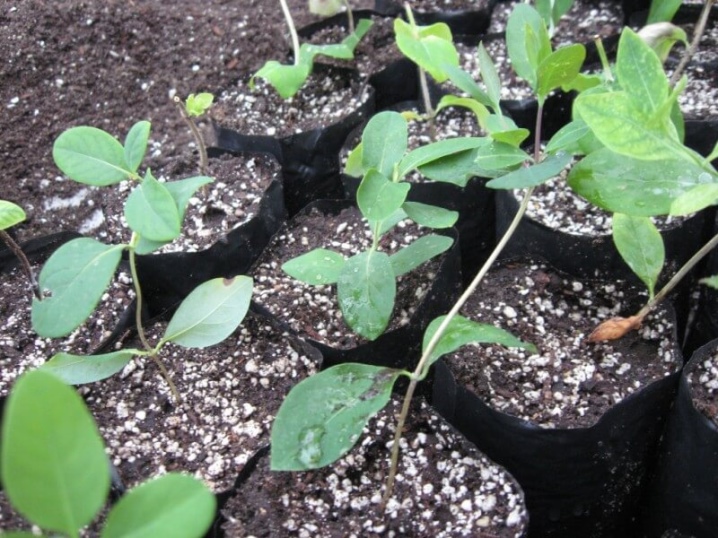
Diseases and pests
Honeysuckle, like other flowering shrubs, needs to be protected from common diseases and pests. The following insects are dangerous for climbing plants.
- Cabbage scoop... This butterfly is small in size. Adults are dark brown in color. The caterpillar's body can be green or gray. There are three light stripes on the back of each of them. During the day, pests hide from the sun. At night, they actively eat honeysuckle foliage. Any insecticide can be used to combat this pest.
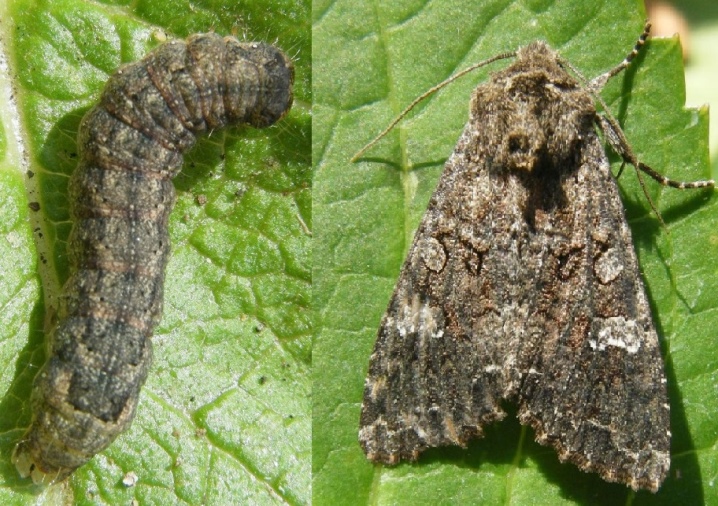
- Spider mite... These small insects are dangerous for both the foliage and the shoots of the honeysuckle. It is quite easy to notice traces of their activity, because they entangle the infected bushes with cobwebs. The honeysuckle foliage at this time becomes covered with white spots, and then falls off. The plant dies quickly because of this. In order to prevent infection of the site with a spider mite, honeysuckle is pre-treated with acaricides.
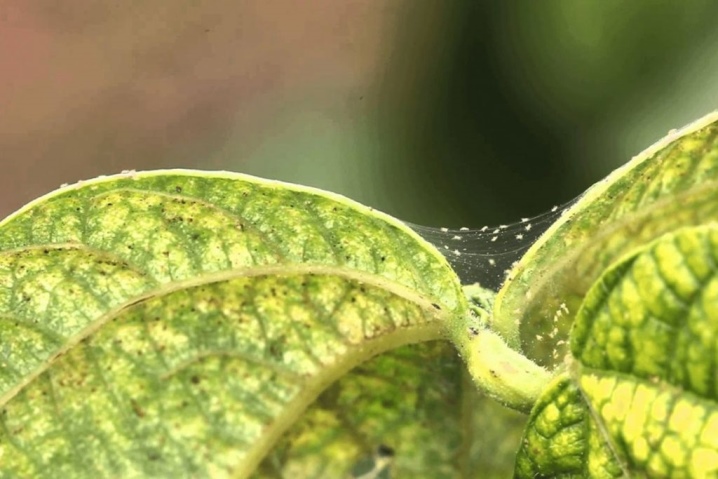
- Honeysuckle aphid. Small pests are light green in color and feed on the sap of young foliage. It turns yellow and dries over time. The plant itself also quickly loses its attractiveness. To combat these pests, the affected foliage is cut off and burned. The bushes are additionally treated with Fitoverm.
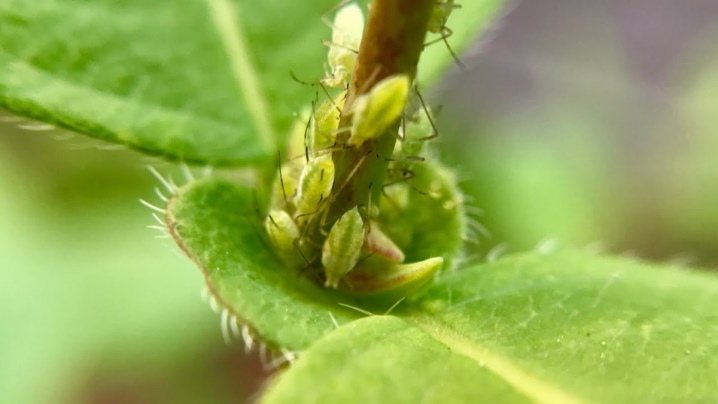
The most dangerous disease for honeysuckle is rust. The foliage of infected plants is covered with dark brown spots. To combat rust, branches with affected foliage are cut off and then burned. In the spring, for prevention, the bushes are treated with Bordeaux liquid.
Honeysuckle and powdery mildew... A dense white bloom appears on the foliage of ailing plants. Shoots dry quickly because of this. To get rid of this disease, the damaged parts must be cut off and burned.

Application in landscape design
Climbing honeysuckle is most often used by designers to decorate fences, as well as form hedges. The green shoots cover the support tightly and look very beautiful. They can also be used to hide imperfections in a wall or fence.
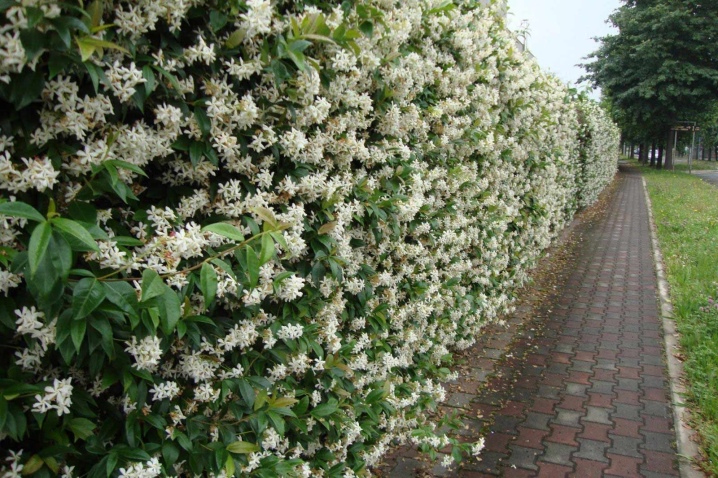
These plants look great next to gazebos or high-backed benches. There you can plant both several bushes and one.

Climbing Honeysuckle can be planted alongside other shrubs. It should be remembered that she does not like the neighborhood with black and red currants. You can plant climbing bushes next to clematis, rose bushes, wild grapes or conifers.
Climbing honeysuckle is a relatively unpretentious plant. Therefore, it can be planted in your country house even for novice gardeners.
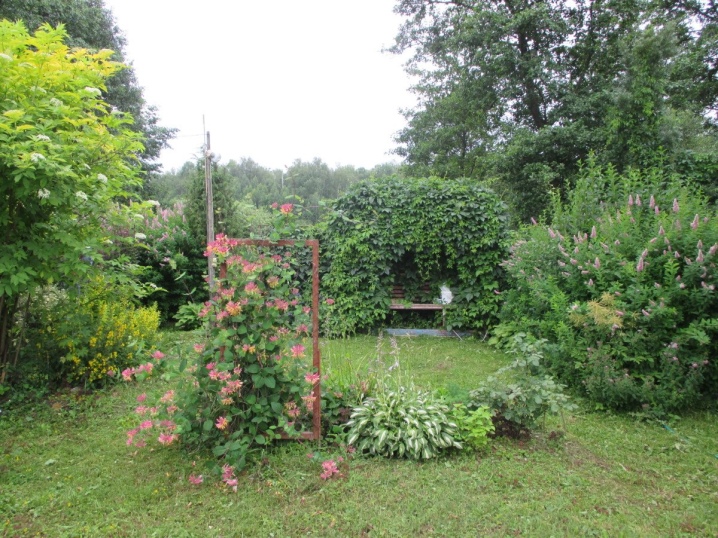












The comment was sent successfully.